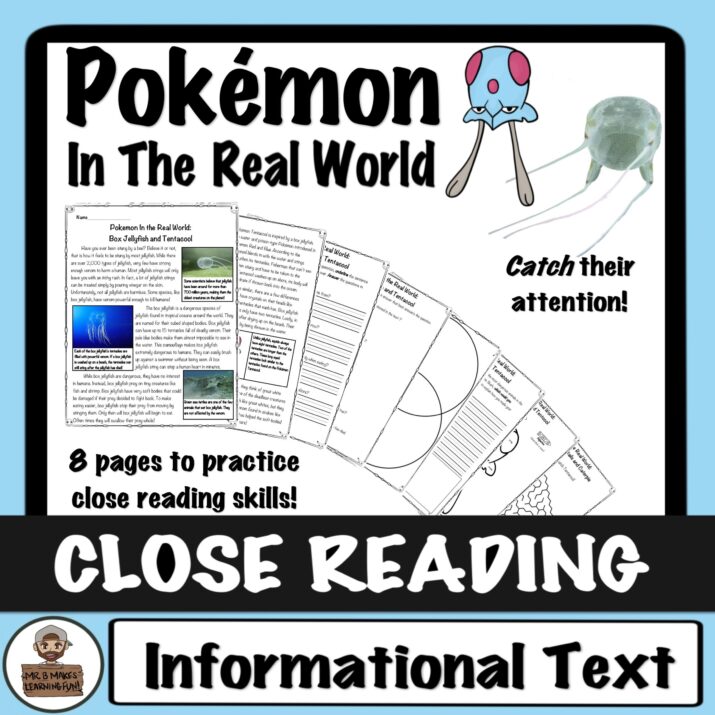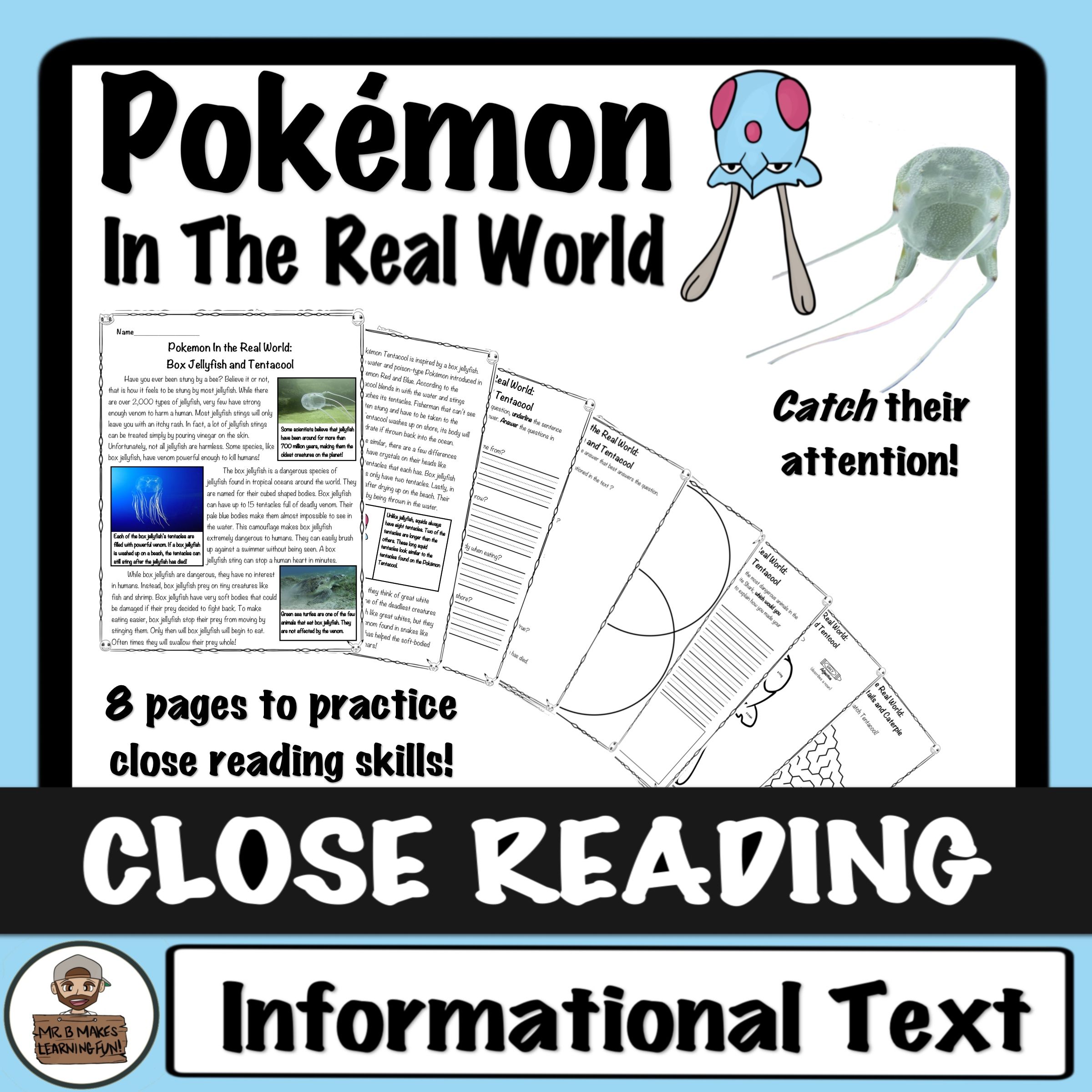Pokémon Close Read and Worksheets/Activities: Box Jellyfish and Tentacool


Pokémon Close Read and Worksheets/Activities: Box Jellyfish and Tentacool
[quads id=11]
Pokémon Close Read and Worksheets/Activities: Box Jellyfish and Tentacool
Pokémon is a popular franchise that has captured the hearts of fans around the world for decades. With its wide range of creatures, each with its own unique abilities and characteristics, Pokémon provides endless opportunities for learning and exploration. One way to engage with this beloved franchise in an educational setting is through close reading activities that focus on specific Pokémon species. In this article, we will explore the Box Jellyfish and Tentacool, two Pokémon species that are inspired by real-life marine creatures.
Box Jellyfish (Tentacool)
Box Jellyfish is a Water/Poison-type Pokémon that was introduced in Generation I. It is known for its distinctive box-like shape and long tentacles, which it uses to capture its prey. In the Pokémon world, Box Jellyfish are typically found in coastal waters, where they use their toxic stingers to fend off predators and catch food.
To engage students in a close reading activity focused on Box Jellyfish, teachers can provide them with a short passage describing the Pokémon’s appearance, habitat, and behavior. Students can then be asked to read the passage carefully and answer questions that require them to analyze and interpret the information presented. For example, students could be asked to identify the key features of a Box Jellyfish, explain how its tentacles help it survive in its environment, and compare its toxic stingers to those of real-life jellyfish species.
In addition to close reading activities, teachers can also incorporate worksheets and hands-on activities that further explore the similarities and differences between Box Jellyfish and real-life jellyfish. For example, students could be tasked with creating a comparison chart that highlights the physical characteristics, habitat preferences, and dietary habits of both species. They could also participate in a scientific experiment that demonstrates how jellyfish use their tentacles to capture and immobilize prey.
Tentacool is another Water/Poison-type Pokémon that bears a striking resemblance to real-life jellyfish species. Like Box Jellyfish, Tentacool is known for its long tentacles and toxic stingers, which it uses to protect itself and catch food. Students can engage in similar close reading activities and worksheets that focus on Tentacool’s biology, behavior, and ecological role. By comparing and contrasting the two Pokémon species, students can gain a deeper understanding of marine ecosystems and the diversity of life forms that inhabit them.
In conclusion, Pokémon close reading activities and worksheets can be a fun and educational way for students to explore the natural world and learn about different species of animals. By focusing on Pokémon species like Box Jellyfish and Tentacool, teachers can engage students in critical thinking and scientific inquiry, while also tapping into their interest in the popular franchise. With a bit of creativity and imagination, teachers can create engaging lesson plans that bring the world of Pokémon to life in the classroom.